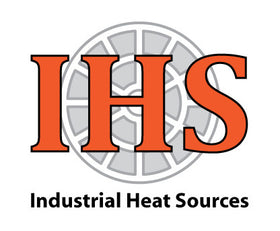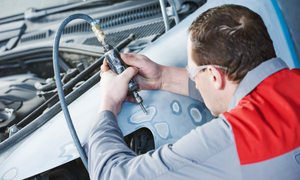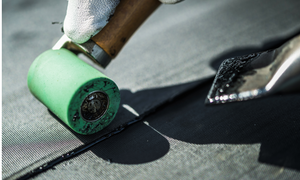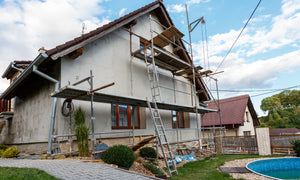Hot-Air Tool Techniques: Single-Ply Welding on Vertical Surfaces

Parapets are wall-like barriers surrounding the edge of a flat roof, as seen on many commercial buildings. These half-walls serve many purposes, including:
- Fire Protection—Stop flames from climbing up the side of a building and catching the roofing membrane on fire.
- Fall Protection—A guardrail around the roof’s edge to help prevent falls.
- Wind-Uplift Resistance—Balances wind pressure to prevent the roofing system from pulling away from its surface.
- Aesthetics—Hides roof surfaces from view.
Unfortunately, these architectural features can prove challenging for contractors charged with seam welding a single-ply, thermoplastic membrane along the parapet’s vertical surface. Unlike flat, horizontal surfaces, there are no automatic welding machines—like the Seamrover DD—that can effectively weld these seams at high speeds.
Traditionally, vertical seams are welded using a hot-air hand tool. While effective and better for hard-to-reach areas, it is time-consuming work. A viable alternative is to use a semi-automatic hand welder.
Following are best practices to remember when welding single-ply seams on vertical parapet surfaces, or any vertical surface for that matter.
Semi-Automatic Hand Welders
Most semi-automatic welders are lightweight and easy to hold against a vertical surface. These welders are self-propelled, so the operator’s job is to simply guide it along the seam edge and ensure it lays flat against the surface.
When using a semi-automatic hand welder on a vertical surface, keep the following best practices in mind:
- Always perform a test weld. Perform a test weld to make sure your heat, air volume and speed settings are correct for the material and environmental conditions (i.e. ambient temperature, moisture, humidity and direct sunlight). If possible, perform this test weld on a vertical surface to ensure you also have the proper welding technique.
- Do not push or pull the machine. Do not push or pull the plastic welder. This can affect weld quality by either applying too much heat to the material—over liquefying and damaging it—or too little—not liquefying the material enough to form a strong bond. Let the welder propel itself, and simply guide it along the seam.
- Press the machine firmly against the surface. Press the welder firmly against the vertical surface to ensure it moves steadily along the seam and that even pressure is being applied throughout. To do this, always hold the tool with both hands—one on the heat source handle, and the other on the guide handle.
- Use a guide aid. For vertical seams that travel parallel to the roof’s surface, look for a semi-automatic welder with a guide aid. These accessories roll along the roof surface, helping to keep your welder at a consistent height, and inline with the seam.
- Robert Heater






